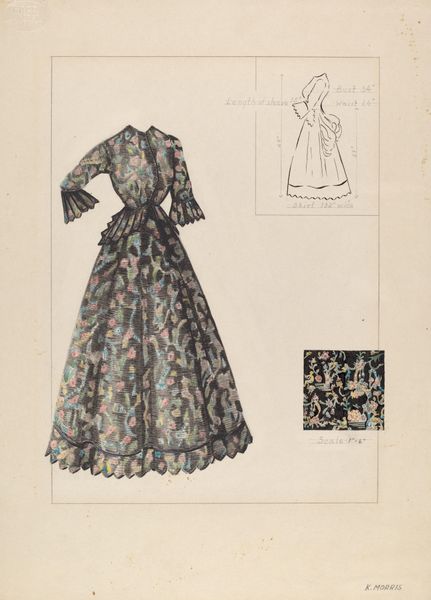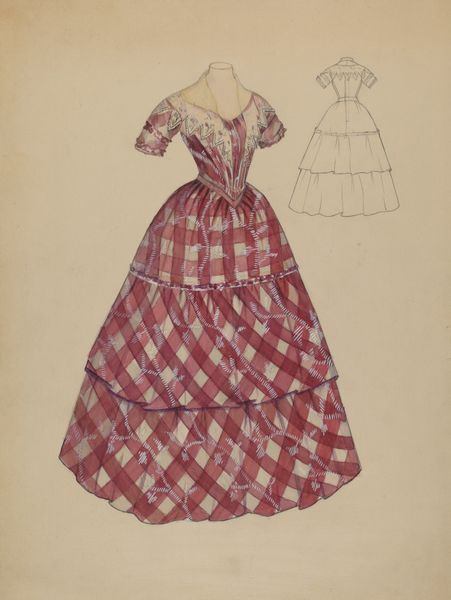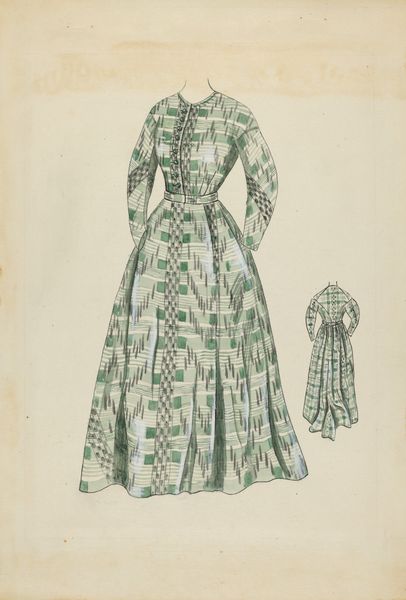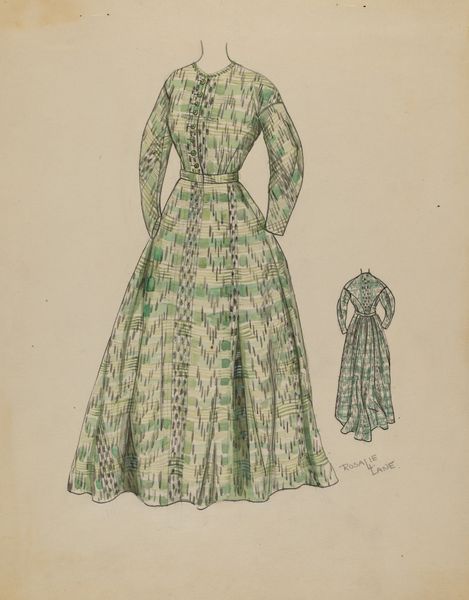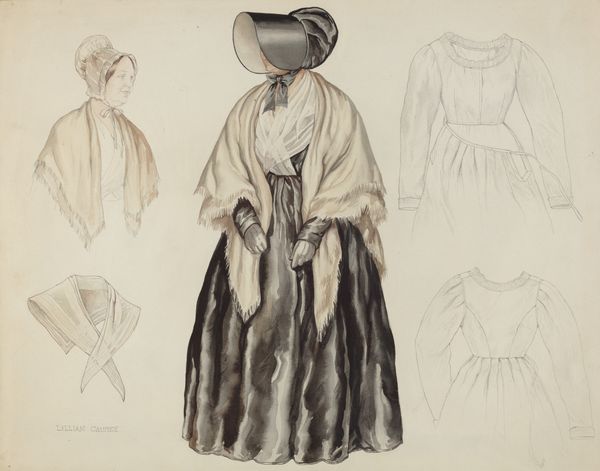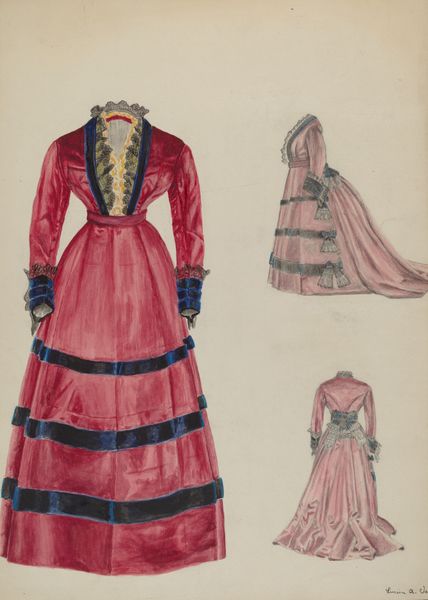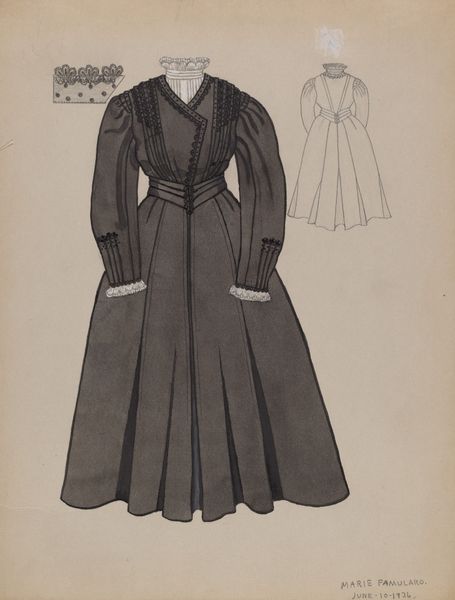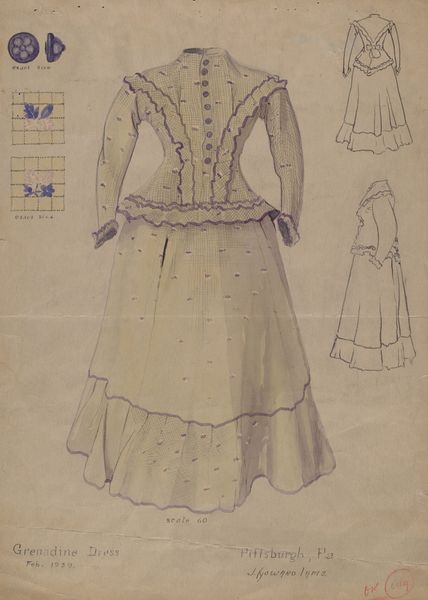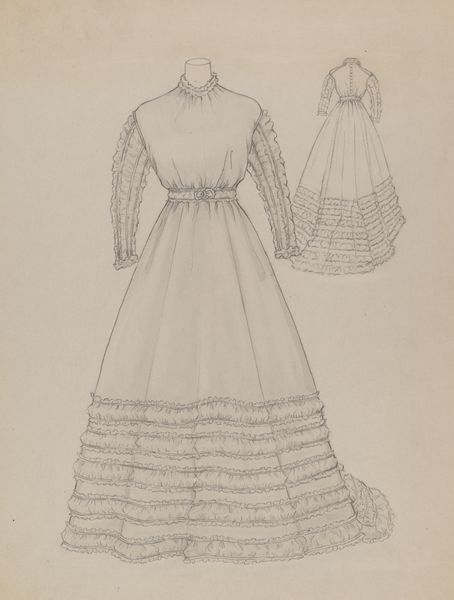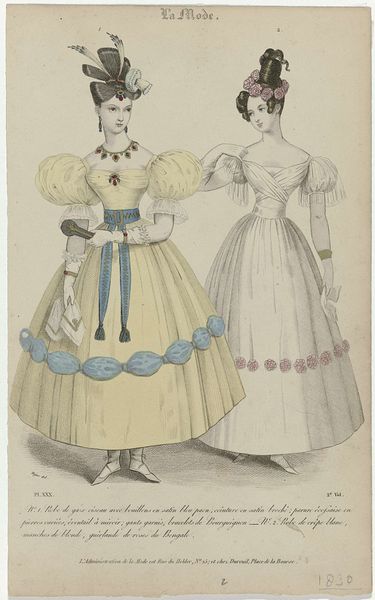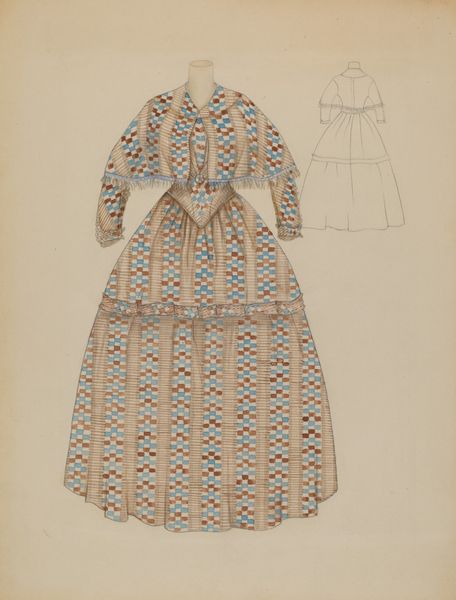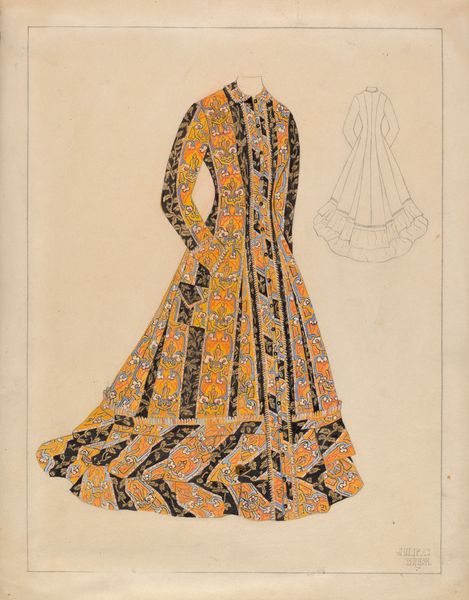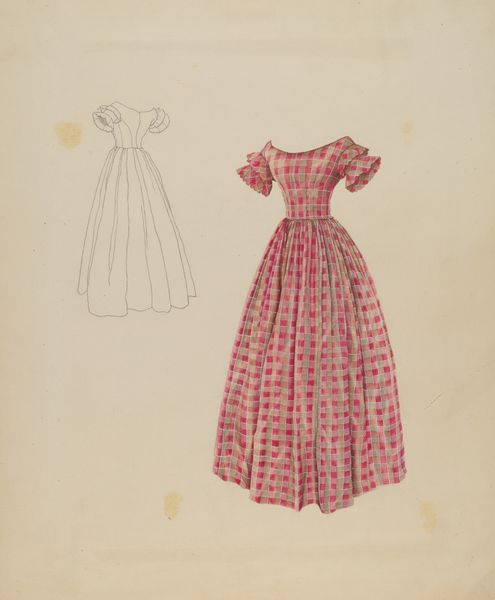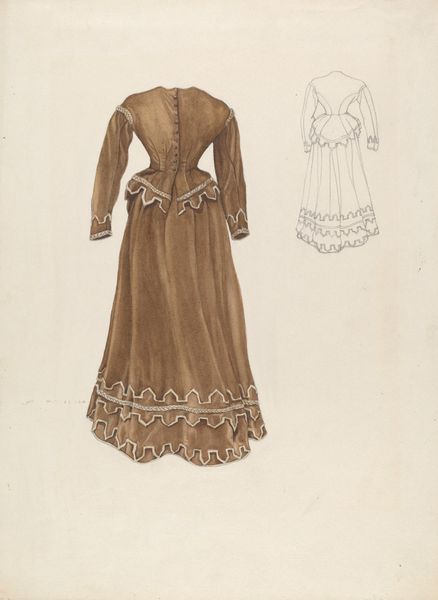
drawing, print
#
portrait
#
drawing
#
art-nouveau
# print
#
historical fashion
#
traditional dress
#
fashion sketch
#
dress
Dimensions: height 191 mm, width 247 mm
Copyright: Rijks Museum: Open Domain
Curator: This print is plate 17 from the “Gazette du Bon Ton, 1920,” showcasing designs by Paul Poiret and Lanvin. Editor: Immediately, I'm struck by the overall elegance but with a strange somberness to it. Is it just me, or do these figures look a bit melancholic, draped as they are in what I imagine is expensive finery? Curator: You know, it’s interesting you say that. The “Gazette” itself was intended to revive the luxury fashion industry after the First World War, so that somber mood might be a reflection of the lingering sense of loss, a yearning for a carefree past. Editor: That makes so much sense! The draped fabrics, those muted colors...almost like a collective mourning subtly woven into the latest trends. And look at the figure on the right in Lanvin’s design – those swirling patterns on the skirt. They almost seem like coded messages, don't they? Curator: Yes, quite! Throughout history, textiles are not merely fabric but narrative threads—literally! The motifs often reflect social anxieties, power structures, and even spiritual beliefs of the time. These swirling patterns might suggest the swirling emotions and instability of the postwar world. Editor: It’s incredible how fashion can act as this silent messenger. Take the silhouette, for example. It seems so restrained compared to earlier, more opulent styles. The almost severe lines, especially in Poiret’s design… Is this a move toward functionality and practicality in response to wartime austerity, maybe? Curator: Absolutely. We see the softening of the flamboyant, orientalist influences of Poiret to these simplified lines—it indicates the cultural shift, the birth of a new, more grounded era for the modern woman, even in dress. Editor: Looking at this now, I'm picking up on so much more than just “pretty dresses." It’s a time capsule, isn’t it? All the anxieties, hopes, and quiet rebellions neatly sketched on paper, speaking volumes about a world in flux. Curator: Exactly. And it reminds us that art, even in the form of a fashion plate, can hold the weight of cultural memory and inspire conversation for generations to come.
Comments
No comments
Be the first to comment and join the conversation on the ultimate creative platform.
